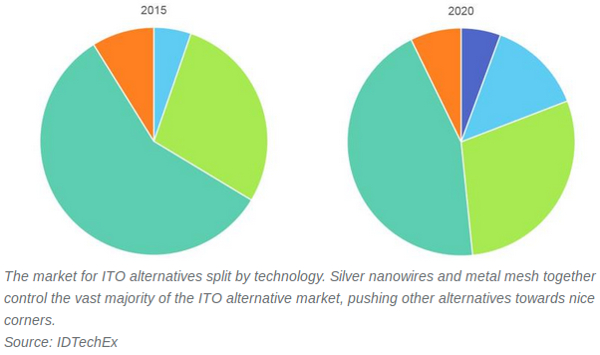Flat, fragile touches are no longer as much in demand as they were at the beginning of the touchscreen technology era. Especially in the consumer sector, a lot of emphasis is now being placed on flexible and durable products.
Touchscreen technology is currently undergoing a rapid change, namely from the incumbent indium tin oxide (ITO) to other materials such as graphene or silver nanowire (AgNW). In our blog, we have already reported many times on the technologies mentioned. We briefly explain why this is so.
Flexibility is the trump card
The switch from ITO to Silvernanowires came about because the novel material is super-flexible (in contrast to ITO). This is particularly noticeable in display applications with flexible design. This gives the manufacturers of touch applications completely different design options. If you look around, you can see that the current product design also involves flexible displays in many cases.
Of course, there are other reasons for changing materials away from ITO. Because silver is the most conductive material in use to date, this is preferred when creating large-area touchscreens (e.g. 20" monitors). At this scale, high conductivity is an essential component of a fast response time, especially in multi-touch applications. For example, if film-based, transparent conductors are used in laptops and smartphones, it is possible to create thinner, lighter and more durable touchscreens. The higher transfer rate also ensures brighter displays and longer battery life.

Reduce costs
We're not telling you anything new when we say that a big reason for touchscreen technologies other than ITO is the high price of indium.
- ITO is relatively expensive.
- The manufacturing process is costly. ITO is usually applied to suitable substrates such as glass or plastic films under high vacuum.
- And the final material is brittle and inflexible, which causes problems when dealing with flexible substrates (as reported at the beginning).
If you have the opportunity to directly compare the costs between AgNW and ITO, you will find that the costs of silver nanowire-based touchscreens are slightly to strongly below the manufacturing costs of ITO-based solutions.
If you are more interested in this topic, subscribe to our RSS feed. In our blog, we report at regular intervals on the various touchscreen technologies, as well as their advantages and disadvantages.

